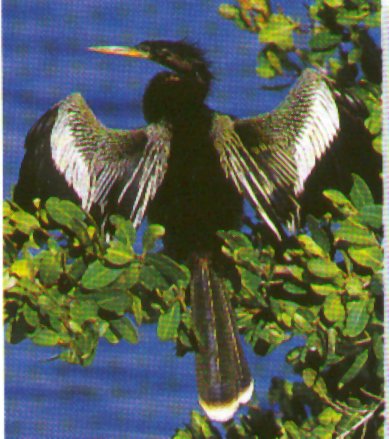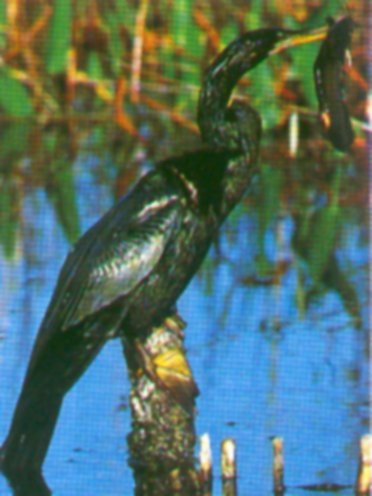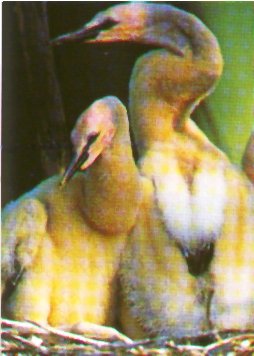
Anhinga

Order: Pelecaniformes Family: Anhingidae Genus & Species: Anhinga anhinga
The anhingas feathers are water absorbent, which are excellent for fishing due to reduced buoyancy, but they must be dried quickly to prevent it from catching a chill.
Habitat.
The anhinga is usually found next to lakes, marches and rivers. They
also inhabit brackish estuaries, mangrove swamps and shallow bays.
A standard feature of its habitat is the presence of waterside vegetation, providing safe
nesting sites.
| Behaviour. The anhinga spends most of the day sunning and preening itself in groups, usually consisting of less than 10 birds, but can be seen in groups of up to 100. It has poor insulation against the cold, confining it to mainly tropical and sub-tropical latitudes. Those that breed at the northern limits of their range, notably south-central USA, desert the nesting ground in October and fly to warmer wintering grounds in Mexico. The anhinga is a graceful bird in flight, alternating between flapping and gliding. It has a long tail which helps it to manoeuvre amongst the dense vegetation, and it's broad wings enable it to soar to great heights on warm columns of rising air. |
 |
 |
Food and hunting. Fish is the main, but not exclusive, diet of the anhinga. They also prey on aquatic amphibians, reptiles, molluscs, leaches and crustaceans. It hunts in the shallows among aquatic vegetation. It often stalks its prey, but seldom gives chase for long, preferring to wait in ambush. It has a habit of spreading its wings when it hunts, possibly to tempt fish to approach a shady resting place. Once the fish is in range, it strikes. A hinge mechanism between the neck vertebrae and powerful neck muscles, allow the anhinga to straighten its neck at lightening speed. It swallows fish head first to lessen the likelyhood of it getting stuck. |
Breeding Breeding is a seasonal affair, even for those in areas where birds can nest all the year round. Once a partnership is formed, it usually lasts for several years. The pair often re-uses a nest from the previous year. Where this is not possible, it builds a nest from sticks and leaves among the reeds, bushes or overhanging branches. The female lays a clutch of up to five pale green eggs that are incubated by both parents for up to four weeks. The chicks are naked when they hatch, but soon grow a coat of buff-coloured down. They develop fast and leave the parents after about two months. After breeding, the anhinga moults its flight feathers and for a brief period is unable to fly. |
 |